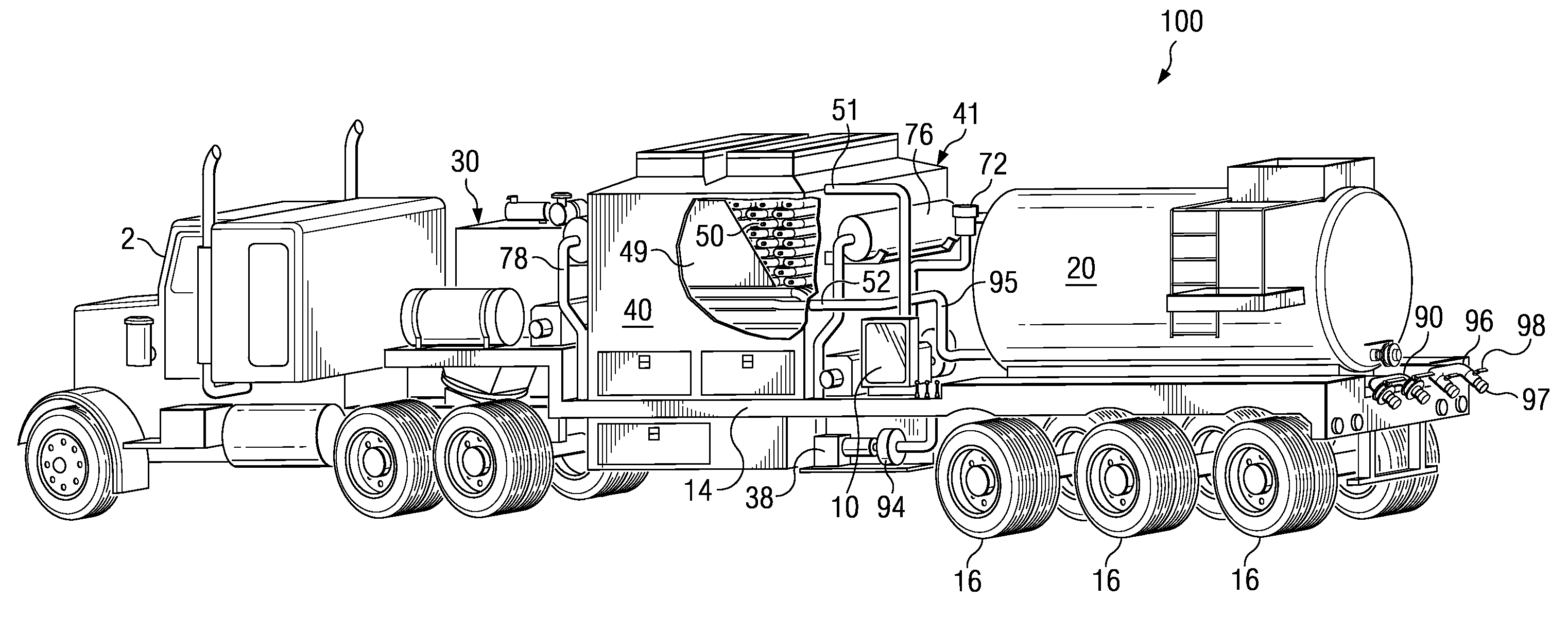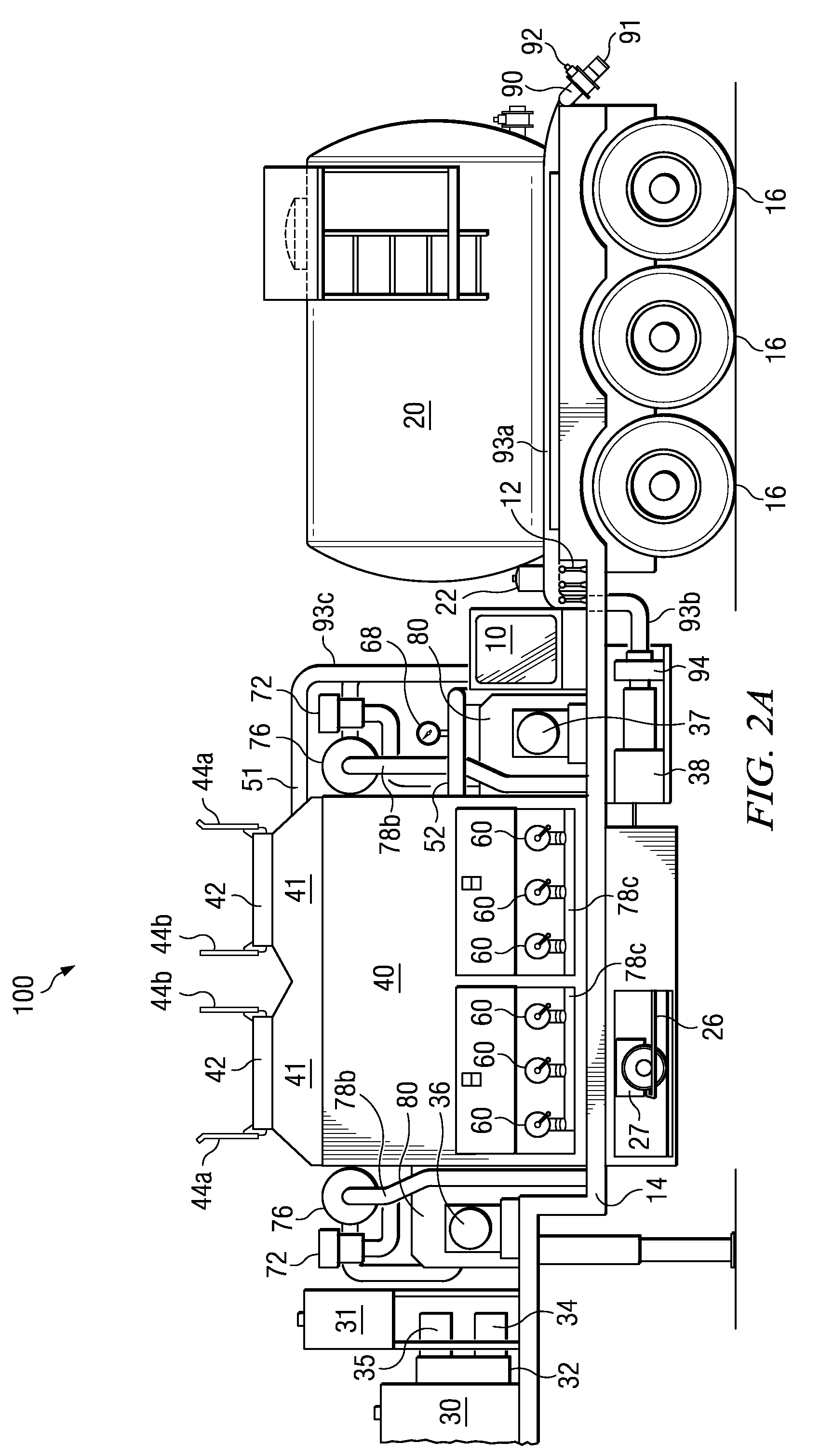Oil-fired frac water heater
a frac water heater and oil-fired technology, which is applied in the field of oil-fired frac water heaters, can solve the problems of affecting the effectiveness of the construction of a permanent heating facility at the well site, poor heating suitability, and inconvenient use, so as to maximize the combustion efficiency, maximize the atomization and combustion of fuel oil, and maximize the combustion efficiency
- Summary
- Abstract
- Description
- Claims
- Application Information
AI Technical Summary
Benefits of technology
Problems solved by technology
Method used
Image
Examples
Embodiment Construction
[0035]With reference to the Figures, and in particular to FIG. 1 powered and 2A-C, an embodiment of the improved oil-fired heat exchanger system 100 of the present invention is shown. The embodiment 100 shown in the Figures is configured to be an oil-fired frac water heater system. As depicted, the embodiment of the frac water heater system 100 is configured on a drop deck trailer 14 and suitable for transport to remote oil field sites. The system 100 includes a fuel storage and supply system, a firebox 40 containing a single heat exchanger 50, primary 70 and secondary 80 air supply systems connected to the firebox 40, and an auxiliary power plant 30 for driving an accessory gearbox 32. The accessory gearbox 32, in turn, drives multiple hydraulic pumps, which power a main fluid pump 94 and the air supply systems. The main fluid pump 94 is used to draw fluid, such as water, from a fluid source and supply it to the intake 51 of the heat exchanger 50. The hydraulic pressure generated b...
PUM
 Login to View More
Login to View More Abstract
Description
Claims
Application Information
 Login to View More
Login to View More - R&D
- Intellectual Property
- Life Sciences
- Materials
- Tech Scout
- Unparalleled Data Quality
- Higher Quality Content
- 60% Fewer Hallucinations
Browse by: Latest US Patents, China's latest patents, Technical Efficacy Thesaurus, Application Domain, Technology Topic, Popular Technical Reports.
© 2025 PatSnap. All rights reserved.Legal|Privacy policy|Modern Slavery Act Transparency Statement|Sitemap|About US| Contact US: help@patsnap.com



